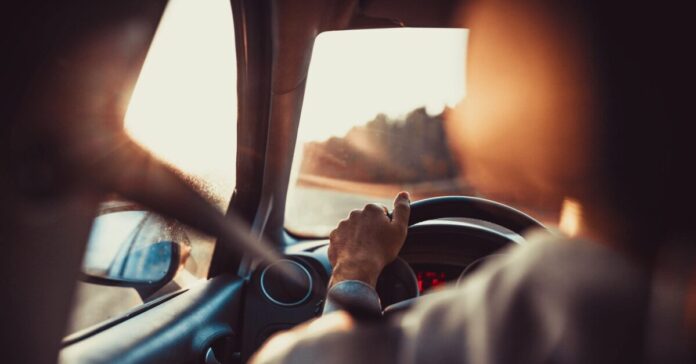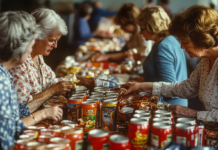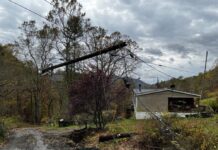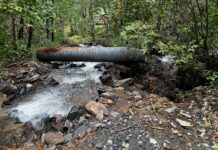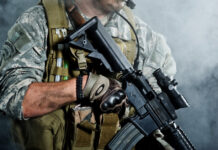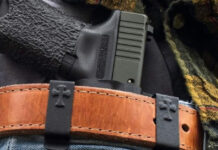I avoid travel on airlines and to states where I cannot legally carry concealed, like Maryland and New Jersey. For example, when we traveled to Lake Tahoe a few years ago for a wedding, I had to insist that we stayed on the Nevada side, not the California side. I also checked three guns.
My most recent trip took me through half a dozen states, all of which honor my concealed carry permit.
Carrying concealed in Florida was easy. I didn’t see a single “no guns allowed” sign on a restaurant or small business. It was also refreshing to attend a large public event without passing through a metal detector.
I even saw billboard advertisements on I-95 for shooting ranges, including one that offers a 600-yard rifle bay. Signs and ads like this are a positive thing and show wide acceptance of firearms. I don’t think I’ve seen one before outside of Las Vegas.
My Travel Armory
Normally, I would carry my .38 S&W revolver and a Glock in .40S&W on a trip. I would then add an AR pistol in 9mm concealed but reachable in the back seat. Depending on the destination and what we intended to do there, I would strap an AR-15 and possibly a second long gun in a locked hard case in my backseat.
In this case, we opted to scale back our carry for two reasons:
- First, we were not entirely sure how my wife’s girlfriend would feel about us unloading long guns into her house. We decided we would have to be discreet. That meant no rifles.
- Second, South Carolina has an interesting twist to their CCW permit: It only applies to guns less than 12 inches long. That meant I could not legally conceal my AR pistol in S.C.
I opted to go with an alternative that I often use when traveling by air: I brought my .40 caliber Kel-Tec Sub 2000 in a roll-along luggage style hard case. This gun case blends in perfectly with our normal luggage and has wheels for easy transport. Because the Sub 2000 folds in half, it is easy to fit inside. In fact, because the case has two layers, it can hold the Sub 2000, a full size Glock, my revolver, two speedloaders, and five Glock magazines, including an extended model. It also has room for three boxes of ammo.
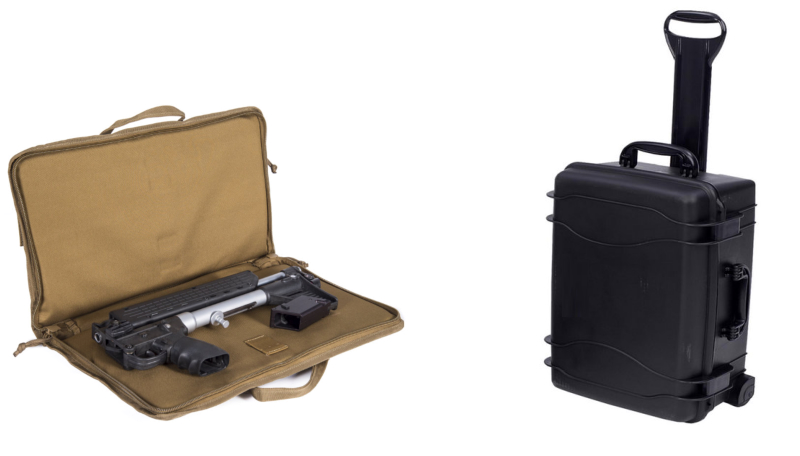
Carrying Extra Ammo
My normal concealed carry Glock load out includes the magazine in the gun and two spares. Because the Kel-Tec uses Glock magazines, I had eight loaded magazines and 100 rounds of spare ammo, plus whatever is stashed in my car, which I would guess is somewhere between 80 to 100 additional rounds. Besides the speedloaders, I also had 50 extra rounds for the S&W.
While I recognize we can stop many threats with just a few rounds, this load is designed to help us get home in a disaster, or at least get clear of a danger an area. If we were to be trapped in a situation where the world is crumbling around us, we want to have some firepower. Normally, that’s what the rifles provide. In this case, it would be the Kel-Tec.
Suppressive Fire
In all the defensive handgun classes I’ve been in, no one has ever suggested the use of suppressive fire in a confrontation. It’s always been be aware of where your rounds can go because you are responsible for each bullet, including the misses, and don’t want to kill an innocent bystander. We are told to shoot to stop the attacker, then check the area for other threats, reload, holster your weapon, call the police, and render aid to your fallen attacker (or retreat to a safe area if that makes more sense).
But what if your adversary is an angry mob rather than an individual or small group? What if there is no police response because of your location or the current situation? I am planning for a SHTF situation, and in addition to guns and ammo, we carry food, water, and a get-home bag in our vehicle. That’s also the value offered by taking an urban combat course, rather than a self-defense course. A combat course covers things like bounding and retreating under fire. Those classes are the only time an instructor has espoused firing to keep the other guy’s head down or to disperse a crowd.
Combat vs. Self Defense
The military uses suppressive fire to keep the enemy from firing back and uses covering fire to cover movement. There may be times we can employ the same tactics in a civilian self-defense scenario against a large party or mob. You can’t do that with a 5-round revolver, but you can with a 30-round magazine in a pistol caliber carbine or an AR-15 type weapon. The important thing is not whether you fire three rounds or 103; the important thing is that you and yours live to walk (or drive) away at the end of the confrontation.
Treat a true survival situation during or after a SHTF scenario it as combat, not simple self-defense. Live to fight another day. That means have a gun and plenty of ammunition.
The Big City
Visiting our friends in Florida meant a short visit to a big city. They lived in a big house on a slice of property on a cul-de-sac in a nice residential neighborhood. When I got up in the morning, a view of the house next door greeted me. When I went down the stairs, the large window gave a great view of the neighbors across the way. The highways were crowded and the drivers aggressive. Red lights seemed to last forever, and when we were grilling out, we could hear the neighbors a yard or two over.
Many people would trade their living situation for a place like that, but not me. I don’t miss any of that.
By the time we left, I was ready to return to my little sector of the world where you can hear someone driving up the hill a few minutes before they get there, where the neighbors are not in sight except when the trees lose their leaves, and we can only hear them if are using a chain saw or target practicing.
We got home late yesterday safe, sound, and exhausted. Thankfully, there was no need for our weapons or any of our survival items. We didn’t have to tap our spare gas cans, even though there is still a shortage of gas in much of the South. (The gas situation improved as we headed north and we got home to see full tanks and no bags on pump handles.) We also didn’t need our spare tire, the tool kit, the duct tape, or our insurance policy. Still, I’m glad we had them as well. We were prepared on all fronts, and that makes me feel safe.
A Related Video
Paul Harrell produced a video on his top five choices for briefcase guns. That’s the purpose the Kel-Tec serves. In the video, he discusses the benefits of carrying a carbine that uses the same magazine as your primary pistol. I’ve queued the video to this section, but don’t hesitate to watch the whole thing or to subscribe. Paul produces so excellent shooting and firearms-related videos.

